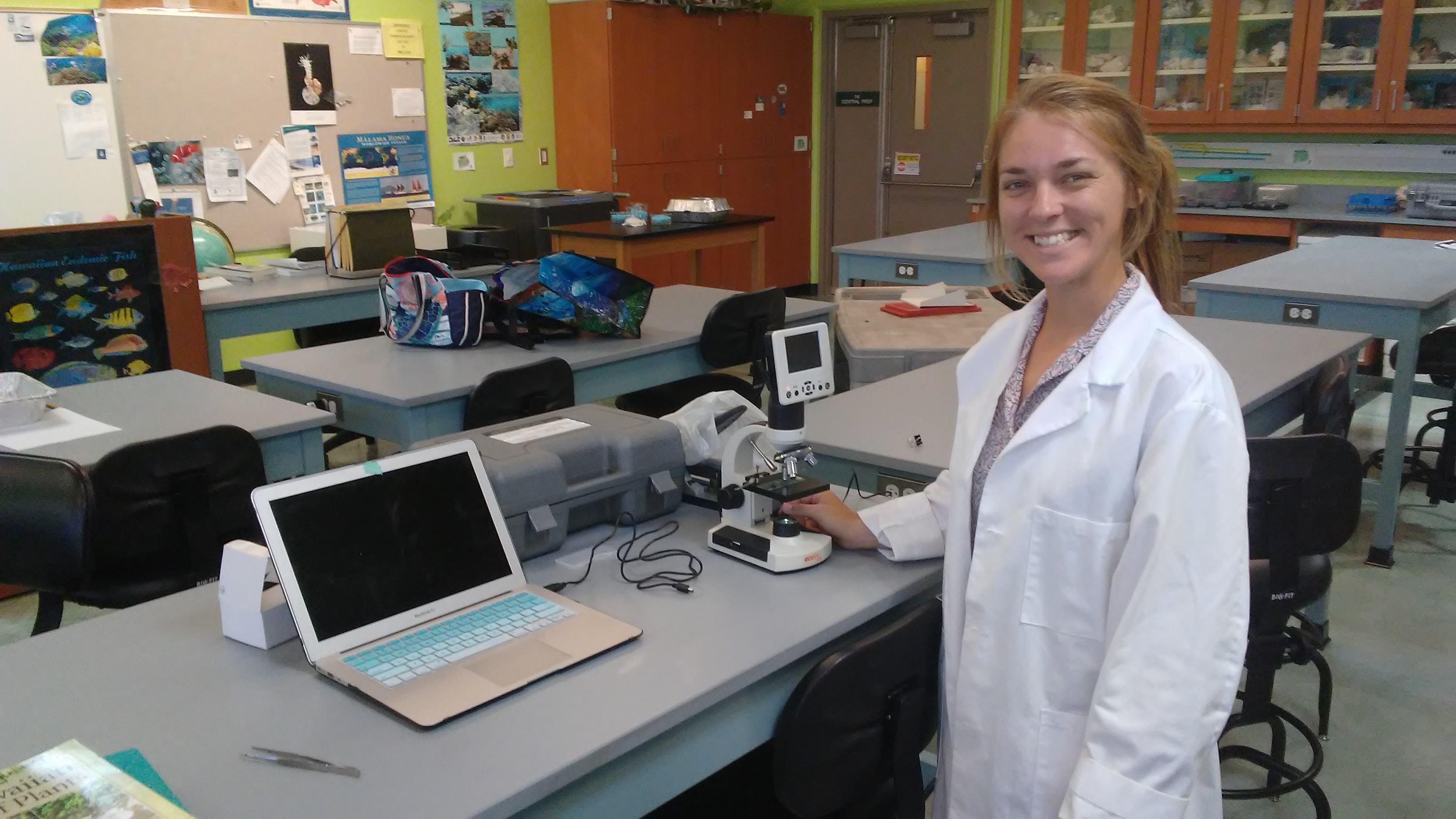
Aloha. I have lived on Maui for 4 years, and am a transferring junior to UH Hilo. I am majoring in Marine Science with a focus on physical oceanography and marine geology. My goals after graduation are to conduct environmental impact research on native Hawaiian ecosystems, restore and preserve these ecosystems, and educate and involve youth in conservation efforts. I spend my free time exploring the ocean SCUBA and freediving, and hiking around our beautiful islands.
Home Island: Maui
High School:
Institution when accepted: University of Hawaii Hilo
Akamai Project: Sea-truthing the Visible Infrared Imaging Radiometer Suite: Calibration and Validation of Water Quality in West Maui
Project Site:
Mentor: Rob Warner
Project Abstract:
The National Oceanic and Atmospheric Administration’s Ocean Color Project has teamed up with the West Maui Ridge to Reef Initiative (R2R) in an effort to develop long-term monitoring of land-based sources of pollution that disrupt coral reef ecosystem health in West Maui. The Visible Infrared Imaging Radiometer Suite (VIIRS) aboard NOAA’s Suomi satellite has the capability to produce images with ocean color data at a resolution of 375 meters. These images provide water quality conditions and allow for daily monitoring of coral systems along coastlines. Satellite-derived ocean color data are processed through a series of algorithms that translate to real-time biogeochemical products of interest in West Maui, such as surface chlorophyll, suspended particulates, and diffuse attenuation. Accuracy of these remotely sensed products is improved through a process called calibration and validation (cal/val), which involves collecting field data and comparing with VIIRS data. In order to corroborate efforts in algorithm translation for monitoring water quality in West Maui, matching satellite data products and field data is required. We began cal/val by performing seawater quality field collections at multiple points along mile-long transects in Wahikuli and Honokowai watersheds in Ka’anapali. At each point, we recorded GPS coordinates and used a DASWIN optical profiler to measure irradiance data in the water column. Seawater was also collected at each location and processed in the laboratory for chlorophyll-a and total suspended solids. Field results were recorded and geotagged on a map, divided into 375 meter pixels, and averaged as a mean value per pixel. The results for each pixel will be compared to the VIIRS data for the date of collection. The correlation will show that VIIRS sensors are in calibrated order to a certain degree of error when compared to field data. Results will be discussed at the Akamai Intern Symposium. This link will provide validation that synoptic monitoring of West Maui’s coastal water quality is achievable through use of VIIRS’ real-time biogeochemical products. Through the calibration and validation of VIIRS in West Maui, R2R will be able to assuredly assess the primary productivity and ecosystem health in the ocean.